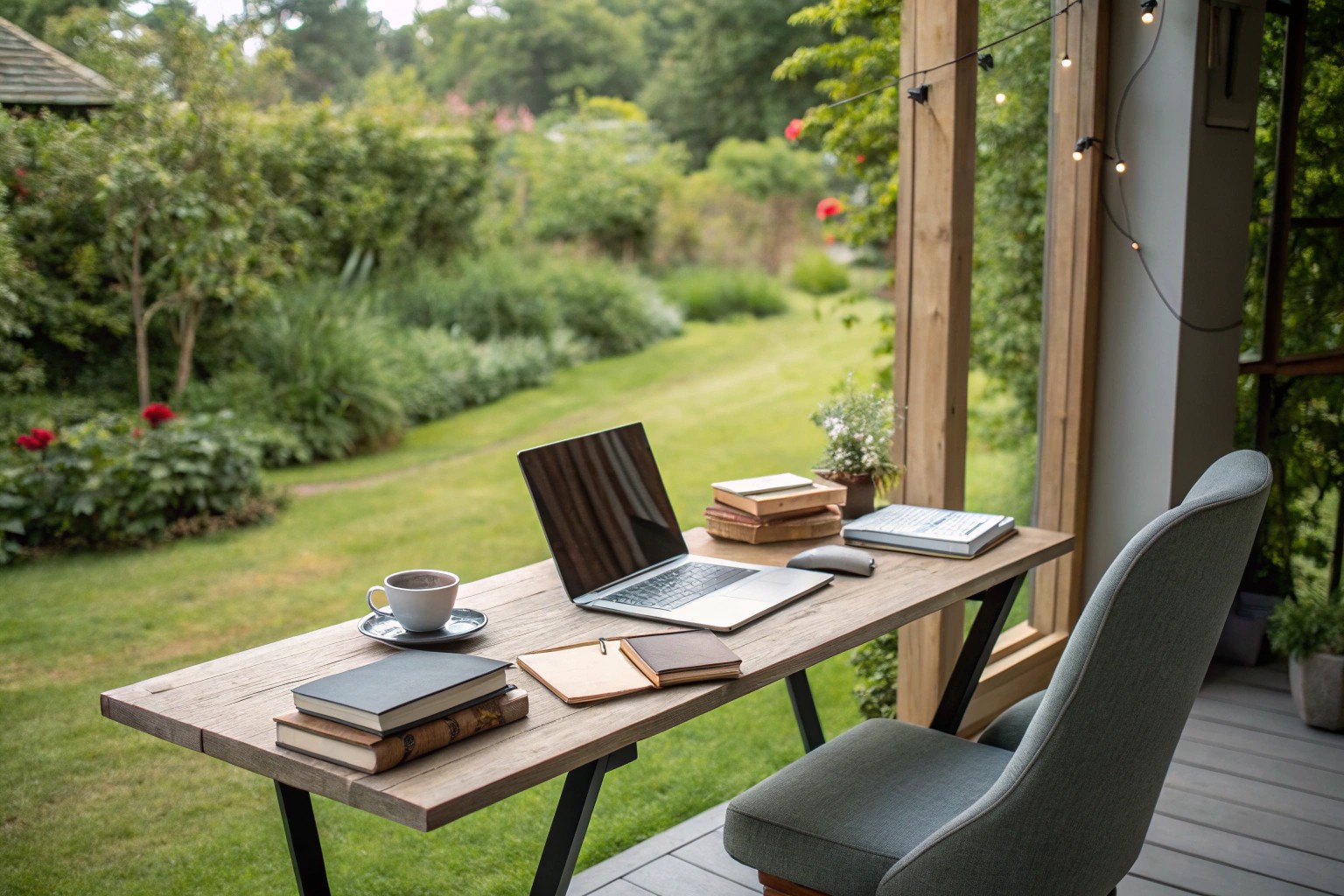The outdoor office revolution has transformed how we approach work environments. As gardens and patios evolve from purely recreational spaces into functional extensions of our professional lives, we’re witnessing a fundamental shift in workplace design. Having designed over fifty garden workspaces in the past three years, I’ve observed firsthand how outdoor offices enhance productivity, creativity, and well-being while providing a unique connection to nature that traditional indoor spaces simply cannot match.
Why Garden Workspaces Are Transforming Professional Life
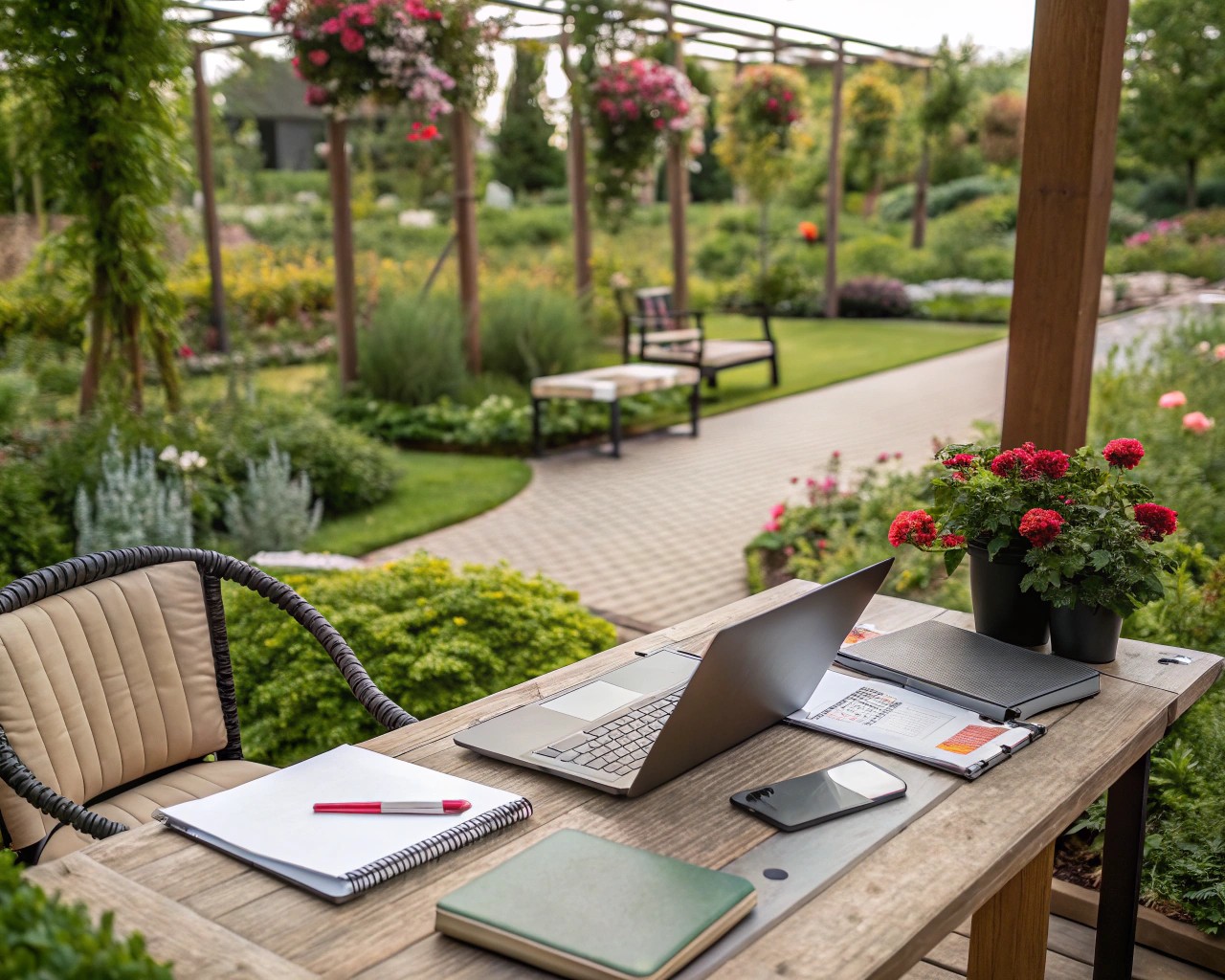
The pandemic accelerated what was already becoming a clear trend in workspace design. Research from the TurfMutt Foundation indicated that nearly 58% of Americans with yards spent time working professionally outdoors during this period. This shift wasn’t merely circumstantial—it reflected a deeper understanding of how our environments influence our work experience.
Benefits of Taking Work Outdoors
Working in garden spaces offers numerous advantages that traditional office environments cannot provide:
- Enhanced well-being and reduced stress: Being outdoors increases concentration and helps us think more clearly
- Increased productivity and creativity: Natural settings stimulate innovative thinking
- Improved work-life balance: Physical separation helps maintain boundaries
- Reduced commuting costs: Eliminating travel time and expenses
- Increased property value: Well-designed garden offices can be a valuable addition
In my experience designing for clients across diverse climates, the psychological benefits often outweigh even the practical ones. Many clients report that their outdoor workspaces have fundamentally changed their relationship with work itself, not just where they perform it.
Planning Your Garden Office: Strategic Considerations
Assessing Your Space and Requirements
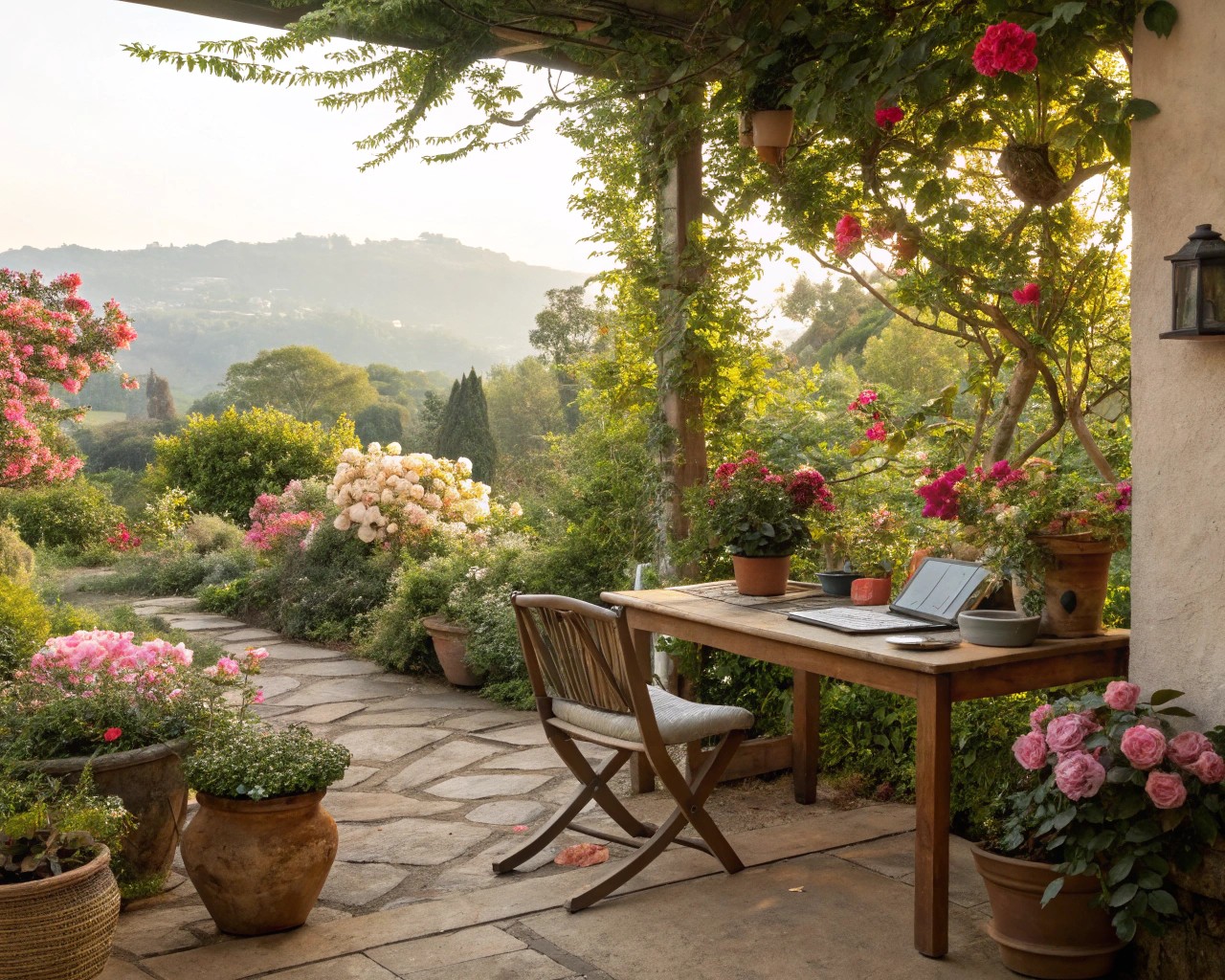
Before jumping into construction or furniture purchases, I always advise clients to carefully evaluate their specific needs and available space. The beauty of garden offices lies in their potential for customization—from compact office pods to spacious multi-room layouts.
When working with clients, we typically start by asking these essential questions:
- What view would you like from your workspace? Maximizing the view and connection to nature is a significant advantage, as design experts often highlight.
- How do you want your workspace to make you feel? Consider the emotional impact beyond just functional requirements
- What specific work activities need to be accommodated? Different tasks may require different setups
- Will the space serve multiple purposes? Many clients need their garden office for both work and family needs
Understanding Size Considerations and Permissions
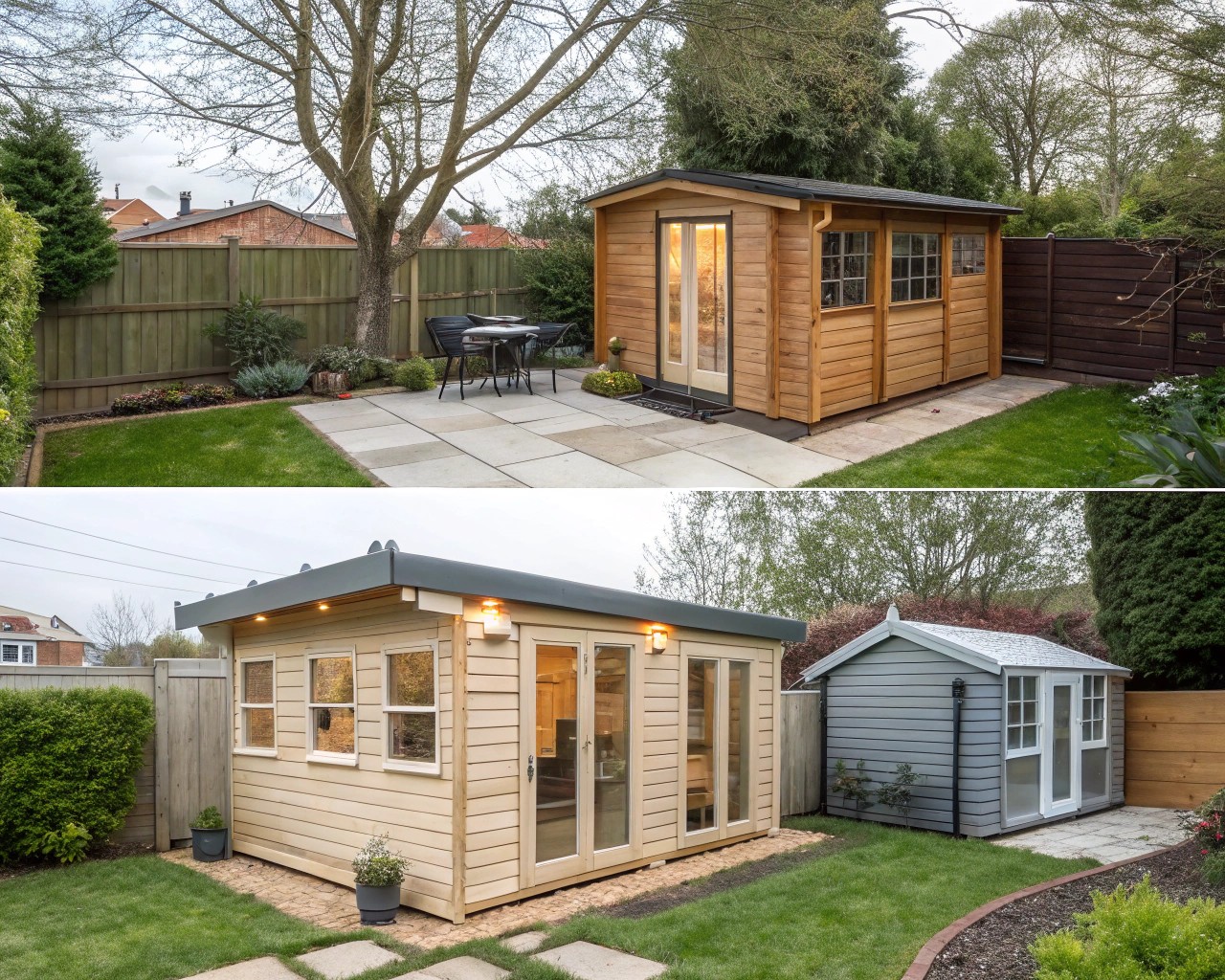
Garden offices can range from tiny nooks to substantial structures. However, if you want to avoid planning permission requirements, you’ll need to adhere to certain limits.
Garden Office Size Categories:
| Size Category | Approximate Dimensions | Ideal For | Permission Requirements |
|---|---|---|---|
| Compact | Under 7sqm | Individual workspace with desk and minimal storage | Typically exempt from permissions |
| Medium | 7-15sqm | Office plus small meeting area or storage | May require permissions depending on location |
| Large | 15-30sqm | Multi-purpose space, multiple workstations | Often requires planning permission |
| Extra Large | 30sqm+ | Commercial-grade office, multiple rooms | Almost always requires planning permission |
“I’ve found that many clients initially overestimate the space they need,” I often tell prospective clients. “A well-designed compact office of 5-7sqm can feel surprisingly spacious and meet most individual needs when properly optimized.”
Designing Your Outdoor Workspace for Productivity
Creating Distinct Activity Zones
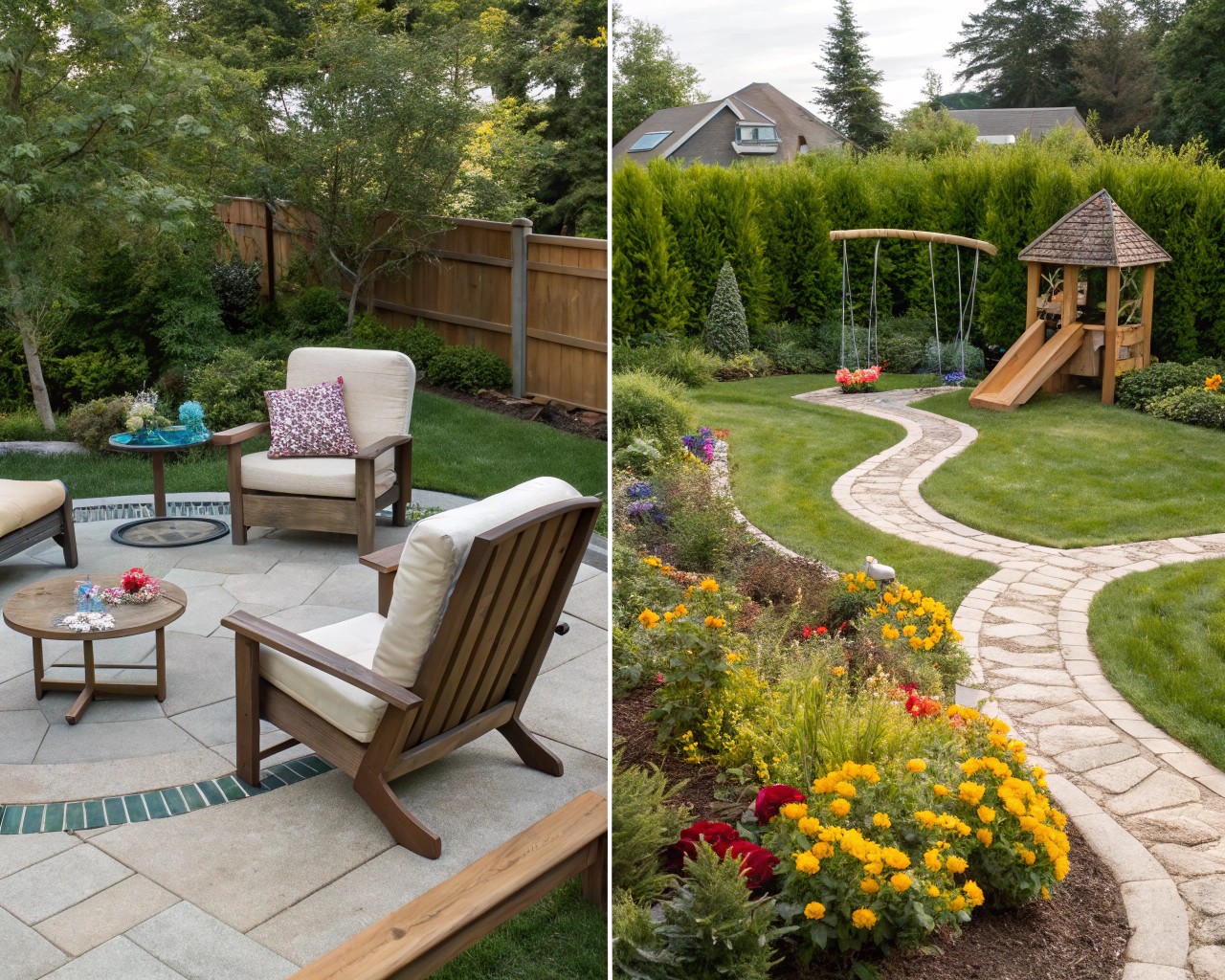
Just as in traditional offices, outdoor workspaces benefit from thoughtful zoning. Consider dividing your space according to different work modes:
- Focus zone: For concentrated individual work
- Collaboration area: For meetings and brainstorming sessions
- Relaxation space: For breaks and informal thinking
- Storage section: For organizing work materials
One project I particularly enjoyed involved transforming a client’s garden into what we called “productivity pathways.” We created designated routes through their garden specifically for “walk and talks,” “think walks,” and outdoor reading. These pathways connected different outdoor work areas and helped facilitate different thinking modes.
Essential Elements for a Functional Workspace
Selecting the Right Work Surface
A sturdy and spacious work surface forms the foundation of any effective outdoor office. Consider these options for different needs:
- Outdoor dining tables: Offer ample space for laptops, notebooks, and accessories
- Compact bistro tables: Ideal for smaller patios without overwhelming the area
- Foldable or extendable tables: Provide flexibility for changing work requirements
Materials should be selected with your local climate in mind:
- Teak and acacia wood: Naturally weather-resistant with warmth and elegance
- Powder-coated aluminum: Lightweight and rust-resistant for humid environments
- Tempered glass or composites: Contemporary, easy-to-clean options
Comfortable, Ergonomic Seating
Never underestimate the importance of proper seating. Industry leaders like Steelcase emphasize using seating specifically designed for work, supporting various postures, rather than relying on standard lawn chairs which can lead to poor posture and discomfort.
Look for:
- Adjustable patio chairs with proper back support
- Weather-resistant cushioned seating
- Chairs specifically designed for extended work sessions
During a recent project for a client with chronic back pain, we sourced specialized outdoor ergonomic chairs that transformed their work experience. The investment in proper seating ultimately extended the hours they could comfortably work outdoors.
Weather Protection and Climate Control
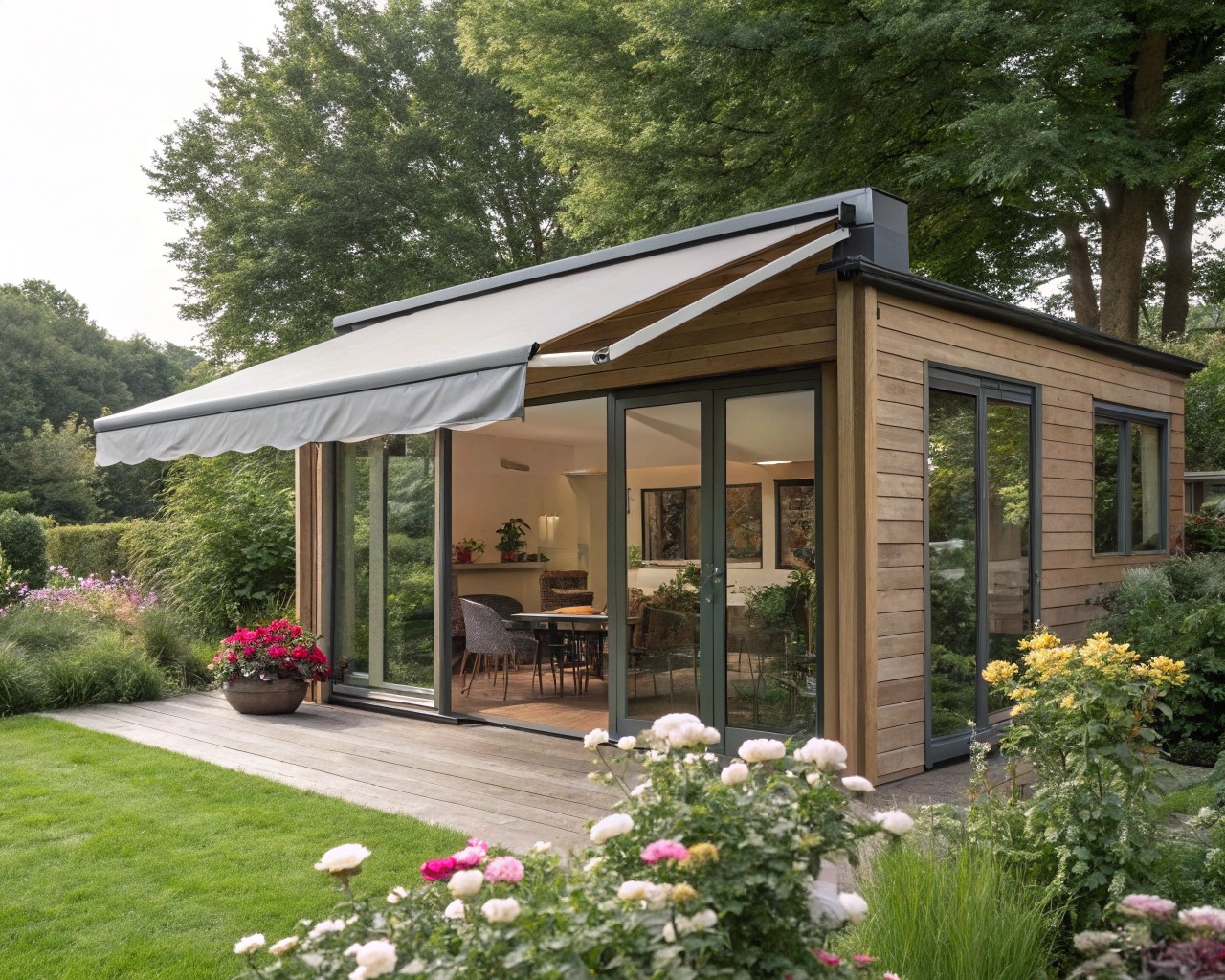
To create a truly year-round outdoor office, addressing weather conditions is essential:
- Shade solutions: Trees, umbrellas, or retractable awnings to protect from sun and help with screen visibility
- Wind barriers: Strategic planting, screens, or partially enclosed structures
- Heating options: Consider outdoor heaters or fire features to extend use in cooler weather
- Rain protection: Covered areas, waterproof canopies, or fully enclosed garden rooms
Case Studies: Successful Garden Office Transformations
The Multi-Purpose Garden Office & Gym
A particularly inspiring project involved a corrugated metal-clad garden structure that served as both home office and gym space. The client, a marketing executive with limited garden space, needed a solution that could accommodate both professional work and personal fitness without compromising on either.
Key features included:
- Barn-inspired exterior with contemporary Japanese-Scandinavian interior design
- Pitched roof for improved airflow and spatial feeling
- Birch plywood finishes for warmth and durability
- Cleverly divided zones that could transform based on time of day
The Garden Office with Concealed Storage
For clients with limited space, creative storage solutions are often critical. One successful project featured a 5m x 3.5m garden building that combined a professional office with hidden storage behind cedar cladding.
The design included:
- Black bi-fold doors for abundant natural light
- High-positioned windows for privacy while working
- Fully plastered interior for a professional feel
- Composite deck creating an attractive entrance transition
What made this project particularly successful was how the storage area was completely concealed, maintaining the professional aesthetic while solving practical household storage challenges.
The Outdoor Office for Creative Collaboration
A memorable project involved designing an outdoor workspace for a design agency’s creative team. The clients needed a space that would foster collaboration while providing connection to nature for inspiration.
We created:
- A 17-foot central shared picnic-style work table with permanent no-glare monitors
- Adjustable height chairs and retractable overhead shades
- Mobile whiteboards and collaboration carts that could be brought outside
- A surrounding garden design specifically planted to stimulate creativity
“This space completely transformed our creative process,” the client reported months later. “Our team meetings generate 30% more viable concepts when held in the outdoor space versus our indoor conference room.”
Practical Considerations for Your Outdoor Office
Power and Connectivity Solutions
Without reliable power and connectivity, even the most beautiful outdoor office will fail as a productive workspace. Consider these approaches:
- Outdoor-rated power outlets: Install weatherproof outlets at strategic points
- Solar charging options: For supplementary and sustainable power
- Underground cable routing: To provide power without visual clutter
- Wi-Fi extenders or mesh networks: Ensure strong internet connectivity
“I’ve learned through trial and error that connectivity should never be an afterthought,” I often tell clients. “Nothing undermines productivity like unreliable power or internet access, so we design these elements into the space from day one.”
Weatherproofing Considerations
For truly year-round functionality, weatherproofing is essential:
Seasonal Adaptation Strategies:
| Season | Challenges | Solutions |
|---|---|---|
| Summer | Heat, glare, insects | Shade structures, ceiling fans, insect screening, UV-protective glass |
| Autumn | Falling debris, variable temperatures | Covered areas, flexible heating options, easy-clean surfaces |
| Winter | Cold, reduced daylight, moisture | Insulation, heating elements, enhanced lighting, waterproof materials |
| Spring | Rain, pollen, humidity | Covered areas, HEPA filtration, dehumidification systems |
Furniture and Material Selection Guide
When selecting furniture and materials for outdoor offices, durability must balance with comfort and aesthetics:
Best Materials for Outdoor Office Furniture:
- Teak: Exceptional weather resistance, natural beauty, but higher cost
- Powder-coated aluminum: Lightweight, rust-resistant, contemporary appearance
- High-density polyethylene (HDPE): Recycled option, extremely durable, low maintenance
- Marine-grade fabrics: For cushions and upholstery that resist fading and mildew
Integrating Nature and Biophilic Elements
The Psychological Benefits of Natural Elements
Research consistently demonstrates that incorporating natural elements into workspaces improves cognitive function, reduces stress, and enhances creativity. When designing outdoor offices, we have the unique opportunity to directly integrate with nature rather than merely simulating it.
Effective biophilic integration strategies include:
- Strategic plantings: Select species that provide visual interest year-round
- Water features: The sound of water creates a calming background
- Natural materials: Emphasize wood, stone and other organic elements
- Wildlife attraction: Bird feeders and pollinator plants add dynamic movement
In one project for a client with high-stress work in finance, we specifically designed their garden office to frame views of a small water feature with carefully selected plantings that attracted butterflies and hummingbirds. They reported that these “micro-breaks” observing wildlife significantly reduced their stress levels during intense work periods.
Living Walls and Indoor Plants
Even in more enclosed garden office structures, incorporating plants brings numerous benefits:
- Improved air quality: Plants naturally filter indoor air
- Humidity regulation: Plants release moisture, improving comfort
- Psychological benefits: Connection to living elements reduces stress
- Visual interest: Plants add texture, color and dynamic elements
Client Stories: Real-World Applications
The Professional Athlete’s Training and Management Space
One particularly rewarding project involved creating a professional garden gym and office for an athlete. This dual-purpose space needed to support both intensive physical training and the business management aspects of their career.
The design included:
- Professional-grade exercise equipment zone
- Dedicated office area for managing sponsorships and scheduling
- Sound isolation between zones
- Climate control systems for optimal training conditions
The client later shared that having both functions in a single dedicated space outside their main home had significantly improved both their training discipline and business organization.
The Remote Executive’s Garden Conference Room
For a corporate executive transitioning to remote work, we created a garden office specifically designed for high-level video conferencing and presentations while maintaining privacy.
Key elements included:
- Professional acoustical treatments to minimize outdoor noise
- Carefully positioned lighting to eliminate screen glare
- Neutral, professional background wall for video calls
- Technology integration for seamless presentations
“My garden office has actually given me more credibility with international clients,” the executive told me. “The unique space and glimpses of garden create conversation starters that humanize business interactions in ways my former corporate office never did.”

